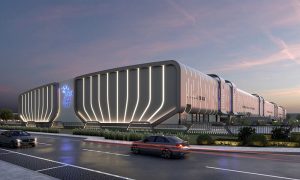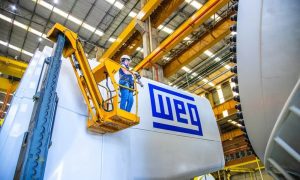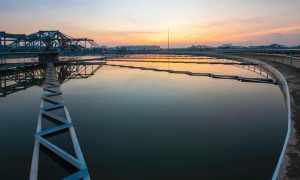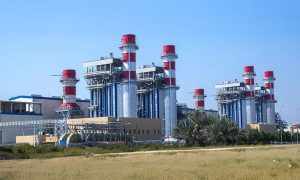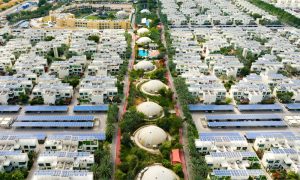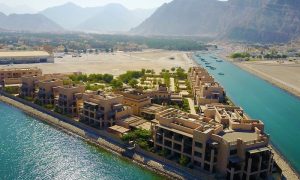Gulf infrastructure on road to growth
Increased activity comes despite crash in oil prices
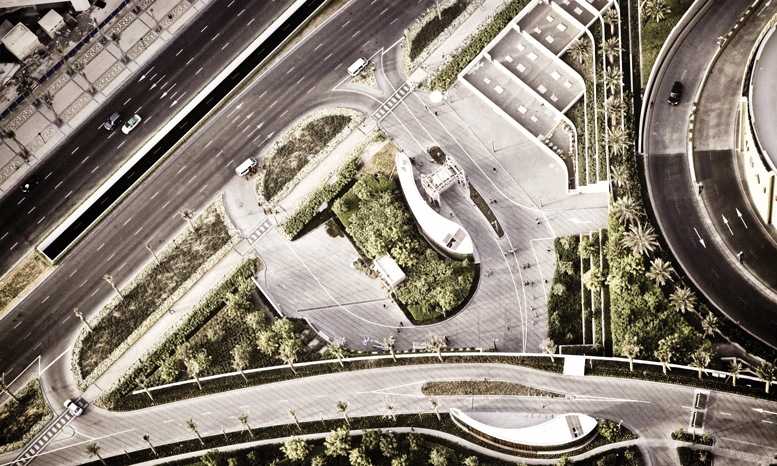
The regional infrastructure market is expected to see tremendously increased activity over the coming years as GCC governments look to increase budgetary allocations in order to boost job creation, economic growth and diversification, despite the slump in oil prices.
Back in August 2015, a Ventures Onsite report pointed to the immense reserves of the region’s sovereign wealth funds, highlighting their capabilities when it came to investing in infrastructure projects, even with budget deficits brought on by low oil prices.
These infrastructure projects are also expected to provide countries in the region with much-needed job creation and economic stimulation, leading to an upward trend in the GCC infrastructure construction market in coming years, for a few reasons:
• Population growth – The GCC population is forecast to grow from 35 million to 60 million by 2050, which translates into the growth of infrastructure construction activities.
• The pan-Gulf railway network – Expected to be operational by 2022, the pan-Gulf railway network runs for 2,177km and connects the six countries of the region. It is expected to encourage travel and increase trade in the region, while also helping on the logistics side to really diversify their non-oil economies.
• Integration of rail and metro projects
• Intensified investments – Roads and railway projects in the GCC have been witnessing unprecedented investment, accounting for the largest share of government spending. It is estimated that the GCC’s combined rail, road and maritime projects are worth in excess of $422 billion over the next five years.
• Airport spending – Airports in the region are expected to expand massively by 2020 due to an increasing number of passengers and cargo traffic, driven by strong tourism growth and mega events such as the World Cup 2022 in Qatar and Dubai Expo 2020.
Starting from 2015, it has been interesting to see that governments in the GCC have been increasingly willing to embrace private sector investment to safeguard their wide array of existing and planned infrastructure projects. The Ventures Onsite report says that it expects that this trend will continue for a few years to come. Some examples listed are:
• Kuwait planning to finance half of the capital expenditure under its new development plan through the public-private partnership (PPP) model
• Dubai has passed a new law that encourages PPPs to fund new infrastructure projects
• A key element of Bahrain’s Vision 2030 is for the private sector to be the engine of growth for infrastructure projects
Alpen Capital’s GCC Construction Industry report, published last year, found that the UAE’s infrastructure was the third most competitive in the world, ranking first for roads, second for ports and third for airports. Bahrain ranked 21st across 100 countries globally, while Oman, Qatar, Saudi Arabia and Kuwait were ranked 25th, 26th, 29th and 67th respectively in 2014.
The report added that it expected to see an 11% increase in GCC infrastructure sector contractor awards in 2015 – $53 billion, up from $48 billion in 2014.
Saudi Arabia remained the largest market (31%) in terms of infrastructure project awards in 2015, followed by Qatar (28%), Kuwait (18%), the UAE (12%), Oman (10%) and Bahrain (1%).
An anonymous source from a leading international infrastructure contractor told Big Project ME that the “recent, unprecedented infrastructure programmes” will be as important to the regional economies as they are to the construction industries. “It is no coincidence that the countries which have led on transport infrastructure investment, and, crucially, those that have successfully executed these projects, are leading on economic growth, diversification and opportunity creation.”
Saudi Arabia’s strong growth last year can be attributed to the government’s investment in major infrastructure projects, including the upgrade of the kingdom’s railway network. KSA, Qatar and the UAE are the big spenders and market leaders amongst the GCC countries for infrastructure projects, with a total planned investment of $106 billion for various rail projects alone within their countries. In fact, the UAE and Saudi Arabia are the only two countries in the GCC in line with the schedule to complete their rail networks by 2018, the original deadline for the pan-Gulf network.
“The pace of payback in infrastructure investment can vary – and notably skill in integrating technical and economic urban planning is important in this – but overall, it is undeniable that the most successful economic growth stories are all intrinsically linked to successfully implemented transportation infrastructure investment,” the source said.
“It is unfortunate that there are still some corners of the Middle East, including in the GCC, where transportation problems are holding back economic growth, sometimes chronically and sometimes in the most basic of ways, but it seems that there are now enough local case studies for comparison that overcoming the blockages has become a very high priority for governments, even amidst the current revenue crunch,” the source pointed out, adding that it is interesting that often the solutions to the transportation problems in the region are well known, and have been for many years, but that while planning and design impetus is present, funding clarity and skilful execution is lacking.
“In terms of impact on the construction industry, infrastructure is, physically and metaphorically, the backbone of the region – different countries may have different themes of peripheral construction activity, and even different drivers, be it commercial real estate in Dubai, social services in Saudi Arabia, the 2022 World Cup in Qatar, tourism in Oman, social stability in Egypt – but the common thread through all of these markets is major core infrastructure development.”
This has led to some fundamental shifts in business models in the region, with traditional building-focused firms diversifying into core infrastructure (HLG and Khansaheb in Dubai, for example). In addition, major international firms and conglomerates are committing to large infrastructure schemes (Siemens, FCC, Bechtel, Samsung and Ansaldo in Riyadh), while new international players are entering the regional market (such as the four Chinese-led consortia that bid on the first phase of Oman Rail tenders).
“The recent infrastructure investment programmes have helped to create a significant new marketplace in the world. To note, there is an onus on those managing policy and commercial behaviours in government to manage this developing supply chain in a way that obtains sustainable long-term value for the market – infrastructure development is a priority in many competing developing markets too, and the global supply chain is increasingly fickle,” said the source in conclusion.






